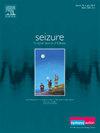Expansion of the Epilepsy Genotype-Phenotype Spectrum: Genetic and Clinical Characterization of 288 Children with Epilepsy in China
IF 2.8
3区 医学
Q2 CLINICAL NEUROLOGY
引用次数: 0
Abstract
Background
In recent years, advancements in sequencing technology have led to a progressive increase in the proportion of epilepsy cases with genetic etiology, while simultaneously facilitating the ongoing identification of epilepsy-associated genes. To summarize the genotype-phenotype association of epilepsy patients is of great significance for the interpretation of genetic reports, clinical diagnosis and treatment and genetic counseling.
Methods
We reviewed and analyzed the trio-WES/WES results of 886 patients with unexplained epilepsy. Ultimately, 288 epilepsy patients were included in this study. The clinical phenotype, treatment and genotype of the patients were analyzed. The single nucleotide variations in all samples were explained.
Results
Of the original 886 patients with epilepsy with no identified cause, 288 patients were shown to have a genetic abnormality, yielding a WES diagnostic rate of 32.5%. The patients with onset before 2 years of age were more likely to have accompanying developmental delay (p=0.001). A total of 312 pathogenic/likely pathogenic variants involving 125 genes were detected. The most common genes affected were primarily SCN1A. After the pathogenic gene was identified, at least 16.7% more patients were able to use recommended medications. Patients with ion channel gene-related disorders had a significantly higher rate of receiving recommended medications. The CHRNA4, ATP1A2, SPTAN1, KCNMA1, and SCN9A, currently lack reports of incomplete penetrance related to epilepsy and our study suggests the potential for incomplete penetrance in these genes.
Conclusion
This study summarized the clinical characteristics and genetic background of children with epilepsy, expanded the genotype-phenotype spectrum, and provided reference for genetic counseling and clinical diagnosis and treatment.
癫痫基因型-表型谱的扩展:288例中国癫痫儿童的遗传和临床特征
近年来,测序技术的进步导致遗传病因癫痫病例的比例逐步增加,同时促进了癫痫相关基因的持续鉴定。总结癫痫患者的基因型-表型关联,对遗传学报告的解释、临床诊疗和遗传咨询具有重要意义。方法回顾分析886例不明原因癫痫患者的三次WES/WES结果。最终,288例癫痫患者被纳入本研究。分析患者的临床表型、治疗方法及基因型。解释了所有样品中的单核苷酸变异。结果在最初的886例病因不明的癫痫患者中,288例患者显示有遗传异常,WES诊断率为32.5%。2岁前发病的患者更容易伴有发育迟缓(p=0.001)。共检测到312个致病/可能致病变异,涉及125个基因。最常见的受影响基因主要是SCN1A。在确定致病基因后,至少有16.7%的患者能够使用推荐的药物。离子通道基因相关疾病患者接受推荐药物的比例明显更高。CHRNA4、ATP1A2、SPTAN1、KCNMA1和SCN9A目前缺乏与癫痫相关的不完全外显率的报道,我们的研究表明这些基因可能存在不完全外显率。结论总结癫痫患儿的临床特点和遗传背景,扩大基因型-表型谱,为遗传咨询和临床诊疗提供参考。
本文章由计算机程序翻译,如有差异,请以英文原文为准。
求助全文
约1分钟内获得全文
求助全文
来源期刊

Seizure-European Journal of Epilepsy
医学-临床神经学
CiteScore
5.60
自引率
6.70%
发文量
231
审稿时长
34 days
期刊介绍:
Seizure - European Journal of Epilepsy is an international journal owned by Epilepsy Action (the largest member led epilepsy organisation in the UK). It provides a forum for papers on all topics related to epilepsy and seizure disorders.
 求助内容:
求助内容: 应助结果提醒方式:
应助结果提醒方式:


